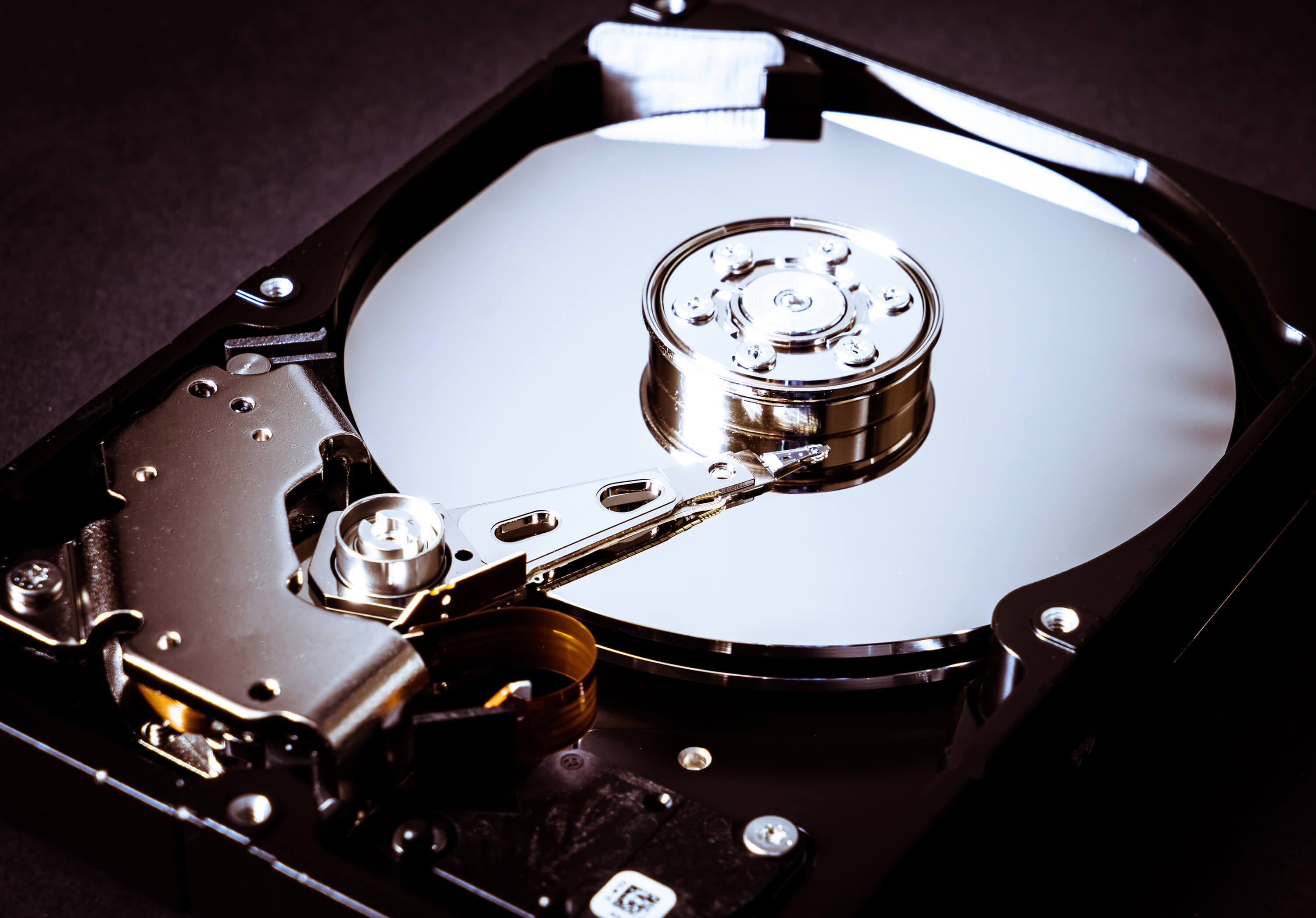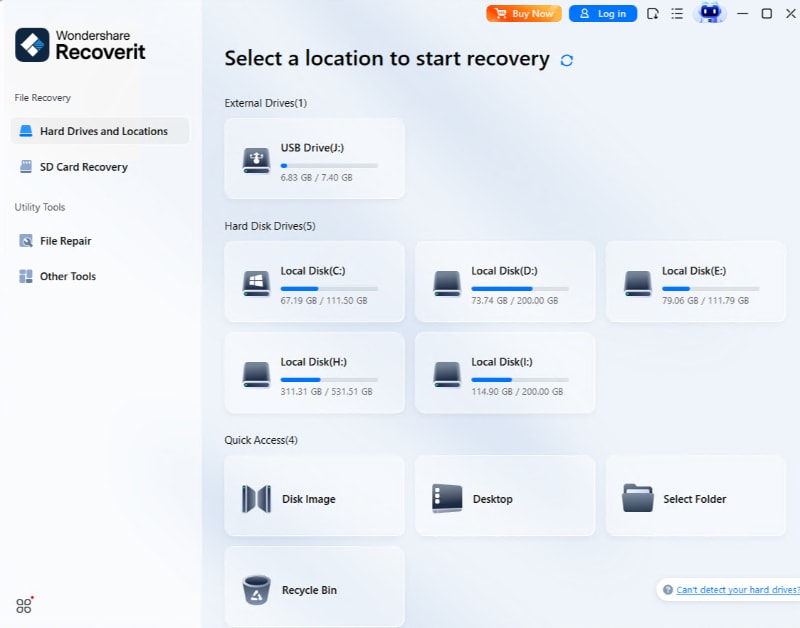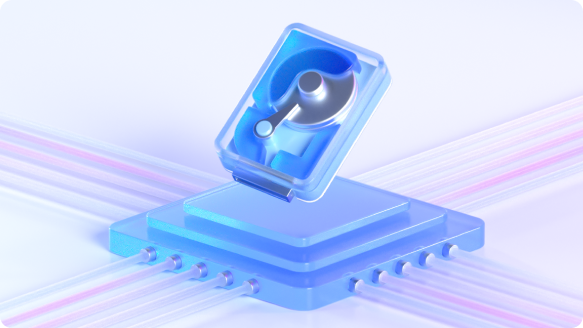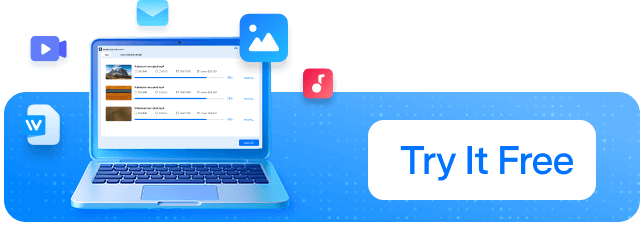Is your C drive full? Does your PC run slow or crash often? You need to clean up C drive right now. When your C drive gets too full, it causes many problems. Your computer slows down. Programs take forever to open. Windows can't install updates. Your PC might even freeze up or crash.
Many users find their C drive is full for no reason. They don't know why space keeps vanishing. Files you don't see eat up your disk. Temp files, cache, and old programs all take space. The good news is you can fix this. Our 12 methods to clean C drive and free up space will help you.

This guide shows you how to clean C drive with easy steps. Anyone can do these fixes. You don't need tech skills. Just follow our steps to free up space on C drive. Let's start and make space in C drive today. Your PC will run faster, and you'll have room for what matters.
Try Recoverit to Recover Accidentally Cleaned C Drive
Security Verified. Over 7,302,189 people have downloaded it.
In this article
Part 1: Why Clean Up C Drive: Common Reasons
Your C drive fills up for many reasons. Here's why you might need to free space on C drive today:
- Temporary files pile up when you browse websites or use apps, taking gigabytes of space
- Windows updates need free space to download and install, often 10GB or more
- Programs you installed years ago and forgot about still use valuable disk space
- Your Downloads folder becomes a dumping ground for files you don't need anymore
- System restore points and backup files grow larger over time without you noticing
- Windows needs at least 10-15% free space to work well, or your C drive is full and slows down
Part 2: How to Clean C Drive: Step-by-Step Guide
Method 1: Delete Temporary Files
Over time, these temp files can take up many gigabytes of space. Worse, they slow down your PC. Removing them is the fastest way to free up C drive disk space. This method takes just minutes but can free up lots of space.
Why use this method:
- Gets results in minutes with no risk to your system
- Can free up several GB of space at once
- Often fixes strange app errors and crashes
- Uses tools built into Windows - no downloads needed
- Works even for non-tech users
- Cleans files you never see but cause problems
Follow these steps:
- Press the Win + R keys. Type "%temp%" (without quotes). Press Enter.

- A folder opens with thousands of temp files. Press Ctrl+A to select all files. Delete the files.
Method 2: Uninstall Unused Applications
Old programs you don't use anymore eat up space. Many people have apps they haven't opened in years. These take up precious C drive space for no reason.
Modern apps can be huge. Games often take 50-100GB each. Video editors, CAD software, and other pro apps use tons of space too. Even small apps add up fast. Removing unused apps is a great way to clean up C drive space.
Why use this method:
- Removes both program files and their data at once
- Stops apps from running in the background and wasting resources
- May fix conflicts between apps that cause errors
Steps:
- Open Settings (gear icon). Go to Apps > Apps & features. Click the "Sort by" dropdown and select "Size" to find the largest apps.

- Click on an app you don't use anymore. Click the Uninstall button and confirm. Follow any prompts in the uninstaller. Repeat for all apps you don't need. Restart your computer when done
Method 3: Clean Up the Downloads Folder
Your Downloads folder is like a junk drawer. Files pile up there, and you forget them. Most people never clean this folder. It can hold gigabytes of files you don't need.
The Downloads folder often has huge files. Setup programs, zip archives, video files, and PDFs collect there. Clearing it is an easy way to free up space on C drive without risk.
Why use this method:
- Finds forgotten large files fast
- Most downloaded files serve a one-time purpose and aren't needed later
- No risk of damaging system files
- Can sort by size to target the biggest space wasters
Steps:
- Open File Explorer. Navigate to C:\Users[Your Username]\Downloads. Click the View tab at the top. Select "Details" view to see file sizes. Click on the "Size" column.

- Look through files and select ones you don't need. Press Delete to move them to Recycle Bin. Move any important files to proper folders. Empty Recycle Bin when done
Method 4: Disable Hibernation Mode (Optional)
Hibernation saves your open work when you shut down. This helps you start back right where you were. But it uses disk space equal to your RAM size. That's huge.
Why use this method:
- Frees up massive space at once (equal to your RAM)
- No effect if you don't use hibernation anyway
- Can always turn it back on if you need it
- Works great for desktop PCs that don't need hibernation
- Doesn't affect normal sleep mode
- One command and you're done
- Gives immediate results with no waiting
Steps:
- Right-click the Start button. Select "Command Prompt (Admin)". Type this command: powercfg.exe / hibernate off

- Press Enter. Close the window. The space is freed up instantly. To turn it back on later, use: powercfg -h on
Method 5: Move Large Files to External Storage
Big files eat up C drive space fast. Moving them to external drives helps make space in C drive without losing anything. This is perfect for files you don't use daily.
Why use this method:
- Keeps all your files accessible but off your main drive
- External drives and USB sticks are cheap and roomy
- Can move files back when needed
- Perfect for media collections and archives
Steps:
- Connect an external hard drive or USB flash drive. Open File Explorer. Go to C:\Users[Your Username]. Check these folders: Videos, Pictures, Documents, Music. Right-click in empty space, choose Sort by > Size.

- Select large files you don't need daily. Right-click, select Cut (or Ctrl+X). Navigate to your external drive. Right-click, select Paste (or Ctrl+V). Wait for files to copy. Verify files work on the external drive before deleting originals
Method 6: Use the Built-in Disk Cleanup Tool
Windows has a great tool just for this job. Disk Cleanup finds junk files to help clean up C drive. It's safe and built right into Windows.
This tool finds types of junk most users don't know about. It removes old Windows updates, error reports, and system logs. It's a smart way to clear space on C drive without hunting for files yourself.
Why use this method:
- Built into Windows - no downloads needed
- Safe and automatic - won't delete important files
- Finds many types of temp files in one click
- Has advanced options for deeper cleaning
Steps:
- Click the Start button. Type "Disk Cleanup" and click the app that appears. Select C: drive if asked which drive to clean.

- Wait for the scan to finish. Check all boxes in the list. Click the "Clean up system files" button. Wait for the second scan. Click OK to start cleaning. Click Delete Files when prompted. Wait for the process to finish
Method 7: Compress the C Drive
You can squeeze more space from your drive without removing files. Windows can compress files to free up space on C drive while keeping them usable.
Compression works by making files smaller. Windows handles this in the background. When you open a file, it uncompresses it automatically. This is great when other methods aren't enough.
Why use this method:
- Keeps all your files in place and accessible
- Works in the background without changing how you use files
- Can save 10-30% of drive space, depending on file types
- No need for external drives or cloud storage
Steps:
- Open File Explorer. Right-click on C: drive. Select Properties. Check the box that says "Compress this drive to save space".

- Click Apply. Choose "Apply changes to C:\ only" or "Apply changes to C:, subfolders and files". Click OK. Wait for the process to finish (may take hours on large drives)
Restart your computer when done
Part 3: Lost Important Files When Cleaning Up C Drive? Use the Recoverit Tool
When you clean up C drive, you might delete important files by mistake. It happens to everyone. Recoverit can help get those files back. This tool finds deleted files on your C drive with high success rates.
Recoverit works by scanning for data that still exists on your drive. When you delete a file, Windows only removes the pointer to it. The actual data stays until overwritten. This tool finds the data and recovers your files. It works for photos, videos, documents, and more.
Steps to recover lost files:
- Download Recoverit. Install the program (ideally on a different drive than C:). Launch Recoverit and select your C: drive. Click "Start Scan" to begin looking for deleted files.

- Wait for the scan to finish (can take 30+ minutes). Use the file tree or filters to find your lost files.

- Select all the files you want to recover. Click the "Recover" button. Choose a save location (NOT on the C: drive). Wait for files to be extracted and saved.

Part 4: Quick Tips on How to Free Up Space on C Drive
Here are some fast ways to make space in C drive. These tips help when your C drive is full and you need quick fixes:
- Turn on Storage Sense in Settings to automatically clean junk files weekly
- Use OneDrive Files On-Demand to keep files in the cloud but access them anytime
- Run the Windows built-in Storage troubleshooter for automated fixes
- Empty your Recycle Bin weekly (or set it to auto-empty)
- Clear browser cache often in Chrome, Firefox, or Edge settings
- Move game installations to other drives using Steam or game launcher settings
- Use CCleaner for a deeper cleaning of the registry and app leftovers
- Reset Windows Store apps that take up too much space
- Uninstall language packs you don't use
Conclusion
Now you know how to clean C drive with many powerful methods. These 12 methods to clean C drive and free up space work for any PC. You can fix the problem when your C drive is full for no reason.
Regular cleaning keeps your PC fast and reliable. Set a monthly reminder to clean up C drive. This prevents problems before they start. Your computer will run faster, apps will work better, and updates will install without errors. Take control of your C drive space today!
Try Recoverit to Recover Accidentally Cleaned C Drive
Security Verified. Over 7,302,189 people have downloaded it.
FAQ
-
How often should I clean my C drive?
You should clean up C drive once a month at minimum. Do it more often if you download lots of files or install many apps. When your C drive is full to 90% or more, it's time to clean right away. Regular cleaning prevents slow performance and crashes. Set a reminder on your calendar to check your drive space monthly. -
Will cleaning C drive speed up my computer?
Yes! When you free up space on C drive, your PC runs much faster. Windows needs free space for temp files and virtual memory. A full drive forces Windows to work harder to find space. After you clean up C drive, programs open faster, files save quicker, and the whole system feels more responsive. For best performance, keep at least 20% of your C drive free. -
Can I move Windows to another drive to free up C drive?
Moving Windows itself is hard and risky for most users. It's better to free up C drive disk space with the methods above instead. If your C drive is full often, consider adding a larger SSD and doing a fresh Windows install on it. Another option is to use disk cloning software to move everything to a bigger drive. Both options need some technical skill or help from a tech-savvy friend.



 ChatGPT
ChatGPT
 Perplexity
Perplexity
 Google AI Mode
Google AI Mode
 Grok
Grok























